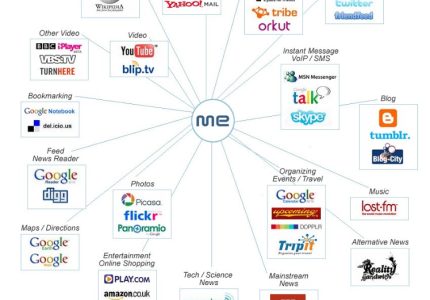Principles of AI-Driven Website Design
AI-driven website design is transforming the way websites are created by leveraging advanced artificial intelligence technologies. It involves the use of algorithms and machine learning to automate and enhance various aspects of web development, from layout and content generation to user experience optimization. Understanding the core principles behind AI-driven design enables developers to craft more dynamic, personalized, and efficient websites that meet modern users’ expectations.
Understanding User Data and Behavior
AI-driven website design leverages artificial intelligence to create more personalized and efficient user experiences by analyzing user data and behavior comprehensively. Understanding user data involves collecting information such as browsing patterns, preferences, and interaction history to tailor content and layout dynamically. By examining these behaviors, AI can optimize website elements, ensuring that visitors receive relevant content, intuitive navigation, and engaging interfaces. Incorporating principles of AI-driven design enables developers to predict user needs, enhance usability, and increase engagement, ultimately delivering a more seamless and satisfying digital experience.
Personalization and Customization
AI-driven website design focuses on creating dynamic and engaging user experiences by leveraging artificial intelligence technologies. A fundamental principle is utilizing data analysis and machine learning algorithms to understand user behavior, preferences, and needs. This allows websites to adapt in real-time, providing more relevant content, layouts, and functionalities tailored to each visitor.
Personalization is a key aspect of AI-powered website design. It involves delivering customized content, product recommendations, and user interfaces based on individual user data. By analyzing browsing history, purchase patterns, and interaction metrics, AI systems can generate a uniquely tailored experience that increases engagement and conversion rates.
Customization extends beyond personalization by offering users control over their experience. AI tools enable the dynamic configuration of website elements, such as choosing preferred themes, adjusting navigation options, or setting notifications. This flexible approach ensures that users can tailor their interactions, making the website more intuitive and satisfying to use.
Implementing these principles requires advanced AI algorithms, data collection strategies, and continual learning mechanisms to refine user experiences over time. The ultimate goal is to create websites that are not only visually appealing but also highly relevant and user-centric, fostering increased loyalty and satisfaction.
Enhancing User Experience with AI
AI-driven website design leverages artificial intelligence to create more intuitive, personalized, and efficient user experiences. By analyzing user behaviors and preferences, AI can tailor content, layout, and functionality to meet individual needs, resulting in increased engagement and satisfaction. Incorporating AI into website design also enables automation of routine tasks, such as layout adjustments and content updates, allowing developers to focus on more strategic aspects. Furthermore, AI tools can provide real-time insights and predictive analytics, helping designers optimize user pathways and improve overall site performance. The principles of AI-driven website design emphasize user-centricity, adaptability, and continuous learning to deliver dynamic and compelling digital experiences.
Key Technologies in AI Website Design
AI website design leverages advanced technologies to create dynamic, personalized, and highly efficient websites. By integrating key AI tools such as machine learning, natural language processing, and computer vision, designers can automate complex tasks, enhance user experience, and deliver tailored content. These innovations are transforming the way websites are developed, making them more intuitive, responsive, and engaging for users.
Machine Learning Algorithms
Key technologies in AI website design leverage advanced algorithms and tools to create dynamic, personalized, and efficient online experiences. Machine learning algorithms play a central role by enabling websites to adapt content, layout, and functionality based on user behavior and preferences, thereby enhancing engagement and satisfaction. Natural language processing allows for sophisticated chatbots and virtual assistants that provide real-time support and interaction. Computer vision techniques facilitate image recognition and analysis, improving visual content management and accessibility. Additionally, AI-powered tools automate tasks such as layout optimization, content generation, and user analytics, leading to more streamlined and innovative website development processes. Combining these technologies results in highly intelligent, user-centric websites that continuously evolve to meet individual needs and industry demands.
Natural Language Processing (NLP)
Key technologies in AI website design are transforming the way websites are created and experienced. Natural Language Processing (NLP) plays a crucial role by enabling websites to understand and interpret human language, facilitating more interactive and personalized user interactions. Through NLP, chatbots can provide real-time assistance, and content can be dynamically generated or tailored to individual preferences. Additionally, NLP enhances search functionality, making it easier for users to find relevant information efficiently. Other essential AI technologies include computer vision for image recognition and personalization algorithms that adapt website content based on user behavior. Together, these advancements lead to more intuitive, accessible, and engaging websites that meet the evolving expectations of users.
Computer Vision and Image Recognition
AI website design leverages advanced technologies like Computer Vision and Image Recognition to create more dynamic and personalized user experiences. These key technologies enable websites to understand and interpret visual data, allowing for automated image tagging, content customization, and accessibility improvements. Computer Vision algorithms can analyze images and videos to extract meaningful information, facilitating the development of interactive features such as visual search and real-time image editing. Additionally, Image Recognition enhances user engagement by enabling websites to identify objects, faces, and textual content within images, leading to smarter content delivery and improved user interaction. Integrating these technologies into AI-driven website design results in more intuitive, efficient, and visually compelling online platforms that meet modern digital demands.
Design Strategies Using AI
AI-driven website design strategies are revolutionizing the way creators develop and optimize online platforms. By leveraging artificial intelligence, designers can enhance user experience, automate repetitive tasks, and generate innovative layouts with greater efficiency. Incorporating AI into the design process opens up new possibilities for creating dynamic, personalized, and visually appealing websites that meet the evolving needs of users.
Dynamic Content Generation
AI-driven website design leverages advanced algorithms to create dynamic content tailored to individual user preferences and behaviors. By utilizing machine learning models, designers can generate personalized experiences that enhance engagement and satisfaction. These systems analyze user interactions in real-time to adapt the website layout, content, and functionality accordingly.
Implementing AI for dynamic content generation allows websites to automatically produce relevant articles, product recommendations, and multimedia elements, ensuring the content remains fresh and pertinent. This approach reduces the need for manual updates and empowers websites to respond promptly to emerging trends or user needs.
Design strategies using AI also focus on optimizing user experience through intelligent interface adjustments and predictive analytics. For instance, websites can anticipate user actions, streamline navigation, and present contextually relevant information, ultimately creating a more intuitive and seamless browsing journey.
Incorporating AI into website design encourages innovation and efficiency, enabling developers to deliver highly personalized and adaptive digital environments. As AI technologies evolve, their role in dynamic content generation will become increasingly central to creating engaging, responsive, and user-centric websites.
AI-Powered Chatbots and Virtual Assistants
AI-driven design strategies are transforming the way websites are created and optimized, enabling more personalized and engaging user experiences. Incorporating AI-powered chatbots and virtual assistants into website design allows for real-time interaction, immediate support, and tailored content delivery, enhancing user engagement and satisfaction. These tools help streamline customer service, gather valuable insights, and adapt website features dynamically based on user behavior. By leveraging AI, designers can automate repetitive tasks, optimize layouts, and develop intuitive interfaces that anticipate user needs. Overall, AI-integrated design strategies lead to more efficient workflows and highly customized websites that better serve both businesses and their audiences.
Predictive Analytics for User Engagement

AI-driven design strategies leverage advanced algorithms and predictive analytics to enhance user engagement on websites. By analyzing user behavior patterns, preferences, and interactions, AI can personalize content, layout, and functionality to create a more relevant and appealing user experience. Predictive analytics enables websites to anticipate user needs, recommend tailored products or information, and dynamically adapt the interface to increase retention and satisfaction. Incorporating AI in website design allows for continuous optimization, ensuring that the site evolves with user trends and preferences, ultimately driving higher engagement and conversion rates.
Implementation Techniques and Tools
Implementation techniques and tools play a crucial role in the development of AI-driven website designs, enabling developers to efficiently transform conceptual ideas into functional digital experiences. By utilizing a variety of programming languages, frameworks, and software platforms, designers can integrate advanced AI features such as personalized content, chatbots, and automated layout adjustments. These tools streamline the development process, enhance user engagement, and ensure that AI-driven websites are both scalable and adaptable to evolving technological trends.
AI Integration with Web Frameworks
Implementing AI in website design involves selecting appropriate techniques and tools that facilitate seamless integration and enhance user experience. Common techniques include natural language processing, computer vision, and machine learning algorithms, which enable websites to understand and respond to user inputs more intelligently. These techniques can be applied through APIs, SDKs, or custom development to create dynamic and personalized interfaces.
Popular tools for AI integration with web frameworks include TensorFlow.js, which allows for machine learning models to run directly in the browser, and chatbot platforms like Dialogflow or Microsoft Bot Framework for conversational AI. Additionally, frameworks such as React, Angular, and Vue.js can be extended with AI modules or plugins to incorporate intelligent features such as recommendation systems, image recognition, and voice assistants. Backend integration often involves using server-side languages like Python or Node.js with libraries for AI and machine learning, ensuring efficient handling of complex computations.
Effective AI website design depends on choosing the right combination of techniques and tools that align with project goals, thus enabling the development of interactive, personalized, and advanced websites that meet modern user expectations.
Popular AI APIs and Services
Implementing AI in website design involves various techniques and tools that streamline development and enhance user experience. Leveraging powerful APIs and services enables developers to integrate sophisticated AI functionalities efficiently.
Implementation Techniques in AI Website Design
- Natural Language Processing (NLP): Used for chatbots, virtual assistants, and content analysis to facilitate better communication and understanding.
- Machine Learning Models: Employed for personalization, predictive analytics, and recommendation systems to tailor content to user preferences.
- Computer Vision: Implements image recognition and visual analytics for features like dynamic image tagging and accessibility improvements.
- Data Collection and Processing: Gathering user data and behavior analytics to inform AI-driven design adjustments.
- Automation Tools: Automating content updates, responsive testing, and user interaction tracking to enhance efficiency.
Popular AI APIs and Services for Website Design
- Google Cloud AI: Offers a suite of machine learning tools including vision, speech, and language APIs for intelligent features.
- OpenAI: Provides advanced language models like GPT-4 for generating dynamic content, chatbots, and customer support.
- Microsoft Azure Cognitive Services: Includes APIs for vision, speech, language, and decision-making functionalities.
- IBM Watson: Offers a broad range of AI services such as language understanding, visual recognition, and personality insights.
- Amazon Web Services (AWS) AI: Provides machine learning and artificial intelligence tools that support scalable and customizable AI integrations.
Low-Code and No-Code AI Platforms
Implementation techniques and tools play a crucial role in the efficient development of AI-driven websites, especially when utilizing low-code and no-code AI platforms. These platforms enable users with minimal programming experience to integrate advanced AI functionalities such as natural language processing, image recognition, and predictive analytics seamlessly into their websites. They typically offer drag-and-drop interfaces, pre-built templates, and visual workflows that streamline the development process, reducing the time and technical expertise required.
Low-code and no-code AI platforms include prominent solutions like Google Cloud AutoML, Microsoft Power Automate, and Bubble, which provide developer-friendly environments for building, deploying, and managing AI models. These tools often feature integrations with popular website builders and content management systems, making it easier to embed AI features directly into web pages. Implementation often involves configuring API calls, setting up data feeds, and customizing user interfaces through intuitive dashboards without writing extensive code.
Furthermore, these platforms frequently offer built-in analytics and monitoring tools, allowing developers and non-developers alike to track AI performance and optimize functionality over time. Overall, leveraging low-code and no-code AI platforms in website design accelerates deployment, enhances user experience through intelligent features, and democratizes access to sophisticated AI capabilities for businesses of all sizes.
Challenges and Ethical Considerations
Designing AI-driven websites presents numerous challenges and ethical considerations that must be carefully addressed. As technology advances, developers must navigate issues related to user privacy, data security, and the potential for bias in algorithms. Ensuring that AI tools are transparent, fair, and respectful of user rights is essential for creating trustworthy and responsible online platforms.
Data Privacy and Security
When designing AI-driven websites, addressing challenges and ethical considerations related to data privacy and security is crucial to ensure user trust and compliance with regulations. These factors influence how data is collected, stored, and utilized, directly impacting user confidence and the site’s reputation.
- Ensuring Data Privacy: Safeguarding sensitive user information against unauthorized access and misuse is essential. Implementing privacy-preserving techniques and clear privacy policies helps maintain transparency and build trust.
- Data Security Measures: Employing encryption, secure authentication methods, and regular security audits protects data from potential breaches and cyber threats.
- Compliance with Regulations: Adhering to laws like GDPR, CCPA, or other regional data protection regulations is vital to avoid legal repercussions and uphold ethical standards.
- Transparency and User Consent: Clearly informing users about data collection practices and obtaining explicit consent fosters ethical data handling practices and respect for user autonomy.
- Bias and Fairness: Addressing biases in AI algorithms prevents discrimination and promotes equitable treatment of all users, aligning with ethical responsibilities.
Bias and Fairness in AI Models
When designing AI websites, addressing challenges related to bias and fairness is crucial to ensure equitable and trustworthy user experiences. AI models can inadvertently perpetuate existing societal biases present in training data, leading to skewed outputs that may disadvantage certain user groups. This raises ethical considerations about the representativeness and inclusivity of AI-driven features.
Developers must carefully evaluate training datasets for potential biases and implement strategies to mitigate their impact. Transparency in how AI algorithms make decisions is vital to foster user trust and allow for accountability. Additionally, ongoing monitoring and updating of AI models are necessary to detect and correct biases as they emerge over time.
Ensuring fairness in AI website design involves prioritizing diverse data sources, avoiding discriminatory practices, and addressing issues of accessibility. Emphasizing ethical principles during development helps create AI-based features that are unbiased and serve all users equitably, ultimately enhancing the credibility and effectiveness of AI-enabled platforms.
Transparency and User Trust
In AI website design, challenges and ethical considerations play a crucial role in shaping user experience and trust. Ensuring transparency and honesty about AI functionalities helps cultivate user confidence and mitigates potential negative perceptions. Ethical concerns include safeguarding user privacy, avoiding bias, and maintaining accountability for AI-driven decisions.
Transparency and user trust can be enhanced through clear communication about how AI systems operate, the data they utilize, and the limitations involved. Visitors are more likely to feel secure when they understand how their information is handled and when there are straightforward options to control their data.
- Providing detailed privacy policies and AI explanation tools that clarify decision-making processes
- Implementing privacy-by-design principles to ensure user data is protected from the outset
- Regularly auditing AI algorithms to prevent bias and ensure fairness
- Disclosing AI involvement openly, so users are aware when interacting with machine-generated content or decisions
- Creating accessible channels for user feedback and concerns related to AI functionalities
Future Trends in AI Website Design
Advancements in artificial intelligence are revolutionizing the landscape of website design, leading to more personalized, efficient, and dynamic user experiences. Future trends in AI website design promise to enhance creativity, automate complex processes, and deliver highly tailored content to individual users. As technology continues to evolve, websites are expected to become increasingly intelligent, adaptable, and user-centric, shaping the way businesses and developers approach digital presence.
Real-Time Personalization
Future trends in AI website design are increasingly centered around real-time personalization, transforming how websites engage with users. Advances in artificial intelligence enable websites to analyze user behavior, preferences, and interactions instantly, allowing for dynamic content adjustments that enhance user experience. This shift promises more intuitive, relevant, and tailored interfaces that adapt seamlessly to individual needs and interests.
Real-time personalization will likely become a standard feature, leveraging machine learning algorithms to deliver customized recommendations, layouts, and messaging. As AI models become more sophisticated, websites will anticipate user intentions, optimize navigation paths, and present content that resonates on a personal level. This advancement will not only improve engagement and satisfaction but also boost conversion rates and customer loyalty.
Additionally, the integration of AI-driven chatbots and virtual assistants will provide instant, context-aware support, further enhancing the personalized experience. Visual and interactive elements will also adapt in real-time, creating immersive environments tailored to each visitor. As these technologies evolve, future AI website designs will be more user-centric, efficient, and capable of fostering deeper connections between brands and their audiences.
voice Search Optimization
Future trends in AI website design are set to revolutionize user experience by making websites more personalized, intuitive, and accessible. Advanced AI tools will enable dynamic content adaptation based on user preferences, behaviors, and real-time interactions, creating seamless and engaging browsing experiences. Additionally, voice search optimization will become a key focus as voice assistants grow in popularity, prompting websites to incorporate natural language processing capabilities. This will allow users to find information quickly and effortlessly through voice commands, enhancing convenience and accessibility. As AI continues to evolve, expect more intelligent chatbots, automated design processes, and adaptive layouts that respond to individual user needs, shaping the future of website development into a more intelligent and user-centric domain.
Adaptive and Responsive AI Interfaces
Future trends in AI website design are centered around creating more adaptive and responsive interfaces that enhance user experience through intelligent automation and personalization. As AI continues to evolve, websites will become more capable of dynamically adjusting their layouts, content, and interaction patterns based on user behavior and preferences.
- Enhanced Personalization: AI will enable websites to deliver highly personalized content, recommendations, and interfaces tailored to individual users, increasing engagement and satisfaction.
- Adaptive Layouts: Future AI-driven websites will automatically modify layouts to optimize visual and functional elements for different devices and user contexts, ensuring seamless experiences across desktops, tablets, and smartphones.
- Conversational Interfaces: Integration of sophisticated chatbots and voice assistants will facilitate natural, intuitive communication between users and websites, making interactions more fluid and less dependent on traditional navigation.
- Predictive Design Elements: AI will analyze user data to anticipate needs and present relevant information proactively, streamlining navigation and reducing effort required for users to find what they seek.
- Real-Time Content Optimization: AI systems will continually adjust content and layout in real-time based on user behavior, environmental factors, and performance metrics, ensuring optimal engagement.
- Automation of Design Processes: AI tools will increasingly assist developers and designers by automating repetitive tasks, generating layout proposals, and even creating entirely new design concepts based on current trends and user analytics.
These advancements will lead to smarter, more intuitive websites that adapt to individual users in real-time, improving overall usability and driving higher levels of engagement and conversion.





